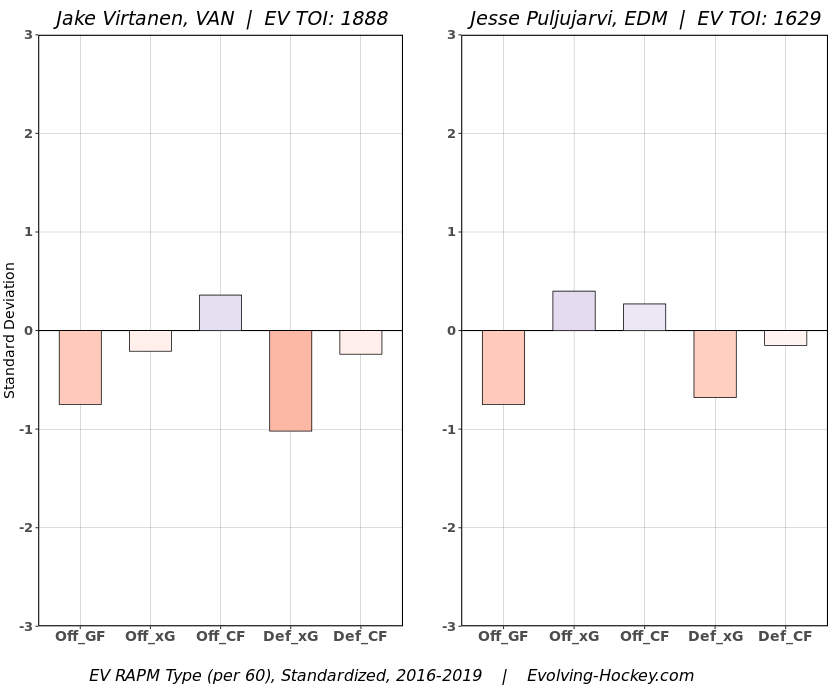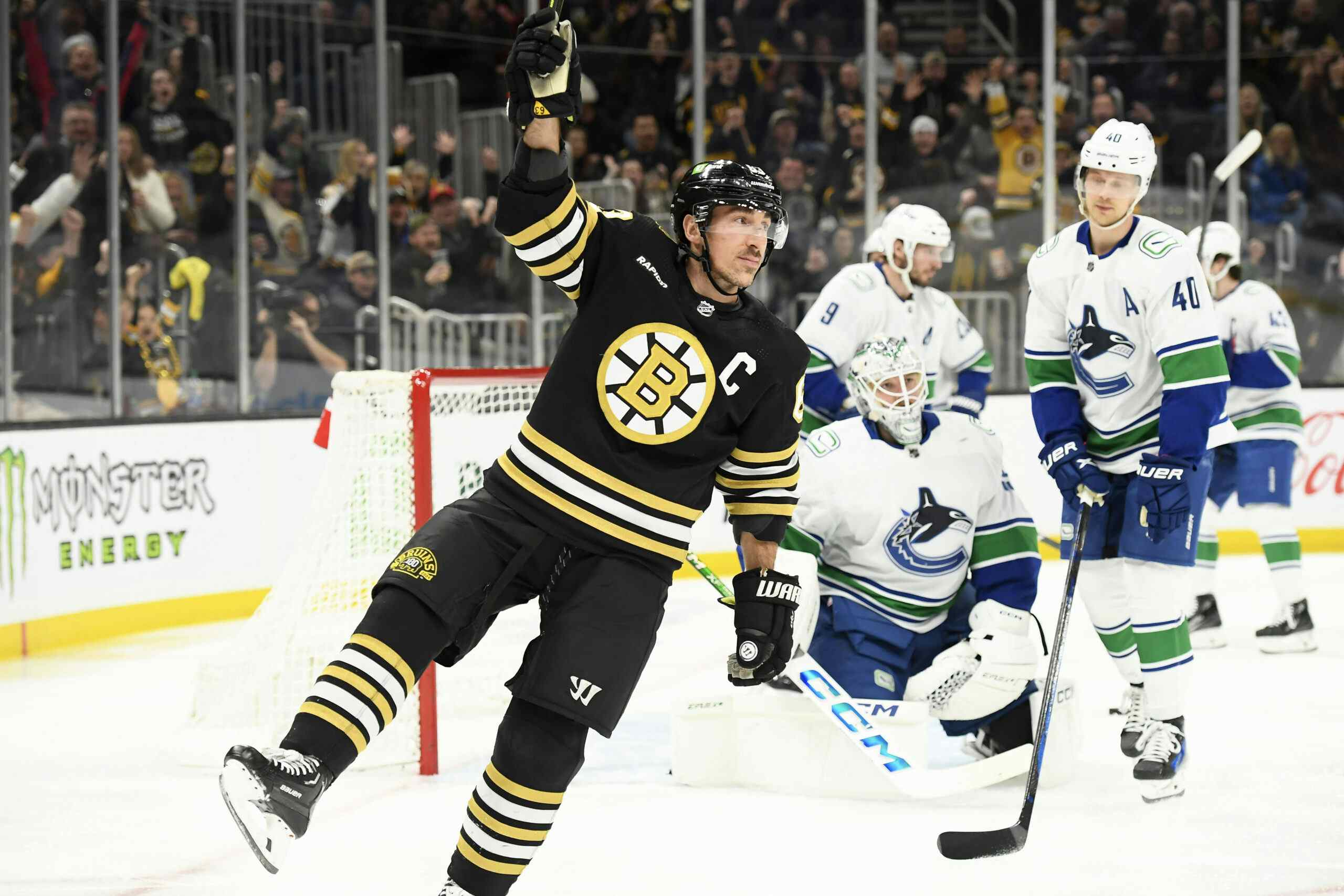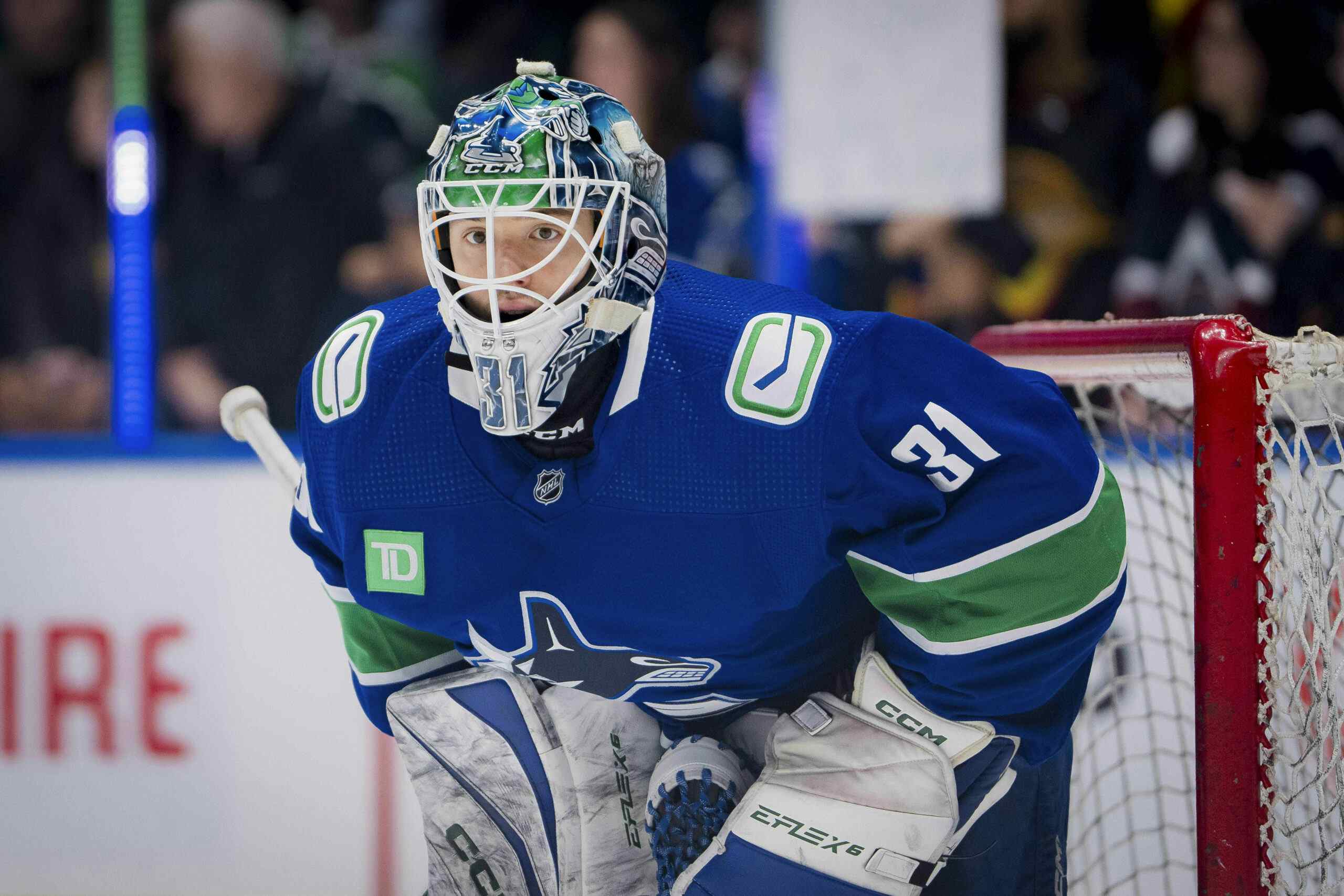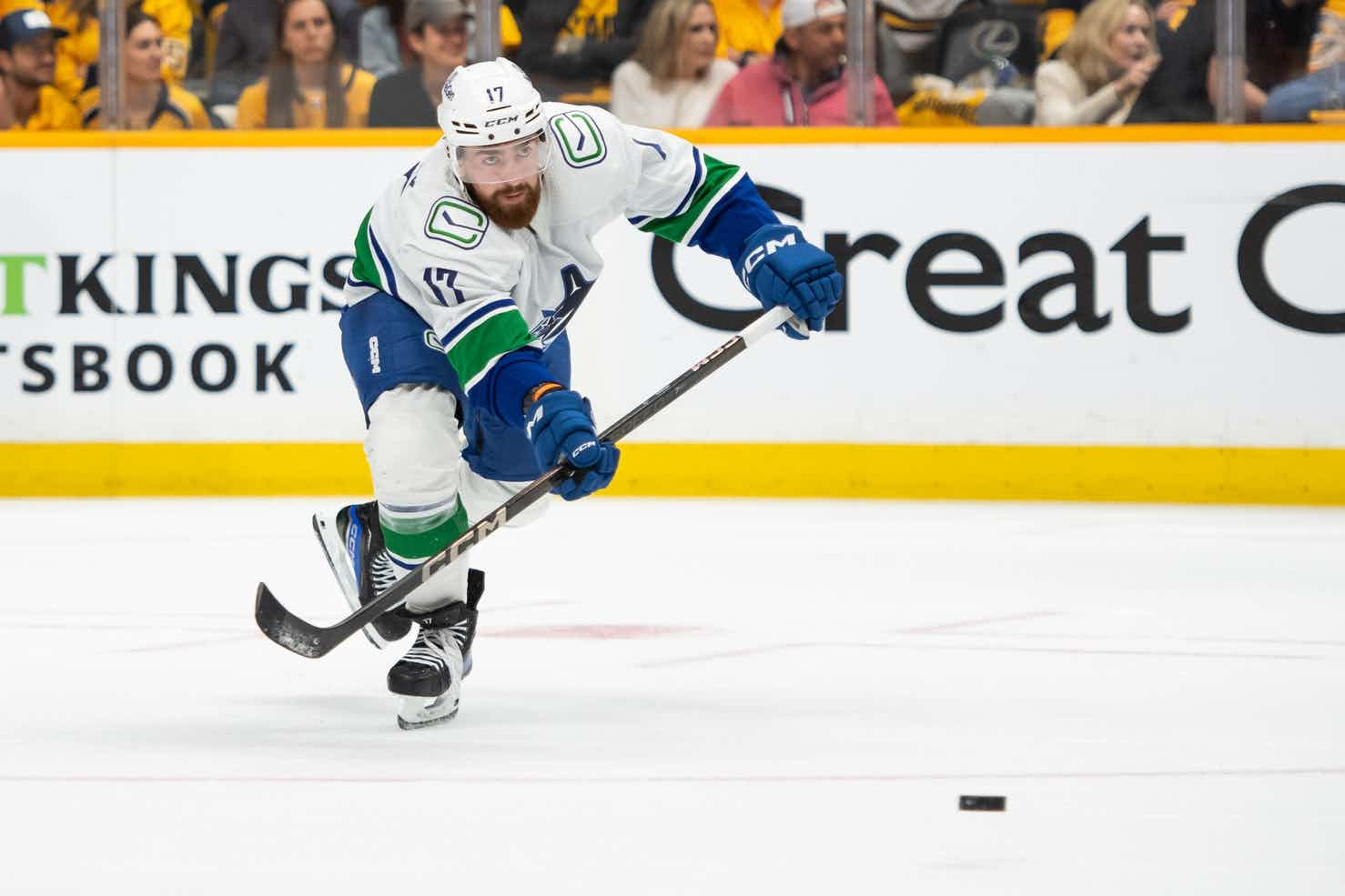What would a Jake Virtanen trade look like?

It’s a tale as old as time: a young player comes into an organization but hasn’t developed the way they had hoped and are now weighing their options. They can hold onto the player to see if he can break through and risk watching the asset depreciate, or they can cut bait while the player still has value and risk watching another team reap the rewards of an unexpected step forward in their development. The Canucks find themselves at such a crossroads with Jake Virtanen, who has garnered attention this preseason for all the wrong reasons.
Why the Canucks might look to trade Virtanen
The first reason(s) the Canucks might look to move on from Virtanen are the off-ice issues that have been back in the news recently. Coming into camp, Virtanen frustrated the coaching staff with alleged conditioning issues, skating with group 3 at the team’s first practice. The issues have been perceived by some fans and members of the media as a lack of preparation and commitment to the team, which isn’t the first time those concerns have swirled around Virtanen. It was quickly the early story of camp, as Travis Green voiced his displeasure with Virtanen’s play at the end of the preseason.
Virtanen’s value on the trade market is another reason to think about trading him. In his draft year, scouts salivated over the idea of drafting someone with his skill set coupled with size and tenacity on the puck. While he’s shown flashes of what could make him great, it’s safe to say he hasn’t yet lived up to expectations. It will be up to the Canucks to decide if he’s on his way to meeting those expectations or not.
Since entering the league in his D+2 season, Virtanen’s basic stats show that his growth as a point-producer hasn’t unfolded as they may have hoped for a former 6th overall pick.

Evolving Hockey’s career WAR (wins above replacement) chart doesn’t paint a favourable picture, either.

It goes without saying that Virtanen is trending in the wrong direction. He put up his highest WAR total in a 55 game season while playing 70 and 75 games in the last two. Although he put up a career-high 25 points last season, his defensive game was abysmal, which is why the graph shows him as below replacement level for the 2018-19 season. The second point on the graph, which marks the 2016-17 season can be ignored as he only played 10 games that season, which is not a large enough sample from which to draw any conclusions.

The RAPM chart above shows how he has fared in comparison to the league over the last three years at even strength and on the powerplay in terms of actual goals, generating expected goals, suppressing expected goals against, and possession. In almost 2000 minutes tracked, he’s struggled in almost every category.
In sum, it’s reasonable to think that the Canucks may want to move on from Virtanen if they believe he won’t improve his statistical profile and mature into an integral piece.
Past trades that help to determine Virtanen’s market value
There are plenty of examples of players in similar positions to Virtanen being jettisoned by the clubs that drafted them. Last season alone saw Pittsburgh deal Daniel Sprong for Marcus Pettersson and Washington deal Andre Burakovsky to Colorado for a 2020 2nd, 2020 3rd, and Scott Kosmachuk. Before both deals, there were rumblings that Sprong and Burakovsky weren’t meeting expectations and fell out of favour with their home clubs, forcing their respective GMs to cut ties and recoup assets for the young players.
At this point, it’s too early to tell whether deals involving Sprong and Burakovsky will shake out well for the Penguins and Capitals. We have seen both sides of the coin where a team moves on from a young player too early, and others where a team moves on before it was too late.
An example of the former was in Boston when Chiarelli and company traded Tyler Seguin because they believed he didn’t fit their team culture, wasn’t tough enough and that they could get a worthwhile return.
Failed to load video.
Nail Yakupov is the other side of the coin, which saw the Oilers deal the 1st overall pick after his last three disappointing seasons with the club. The Blues were the team on the other end of the deal who thought Yakupov still had upside and they could find it. The cost for St. Louis was a 3rd round pick and it didn’t pan out as Yakupov only played 40 games for the Blues and was eventually not re-signed. If you ask any Oiler fan today, they will tell you that it was a great move by the club, but at the time of the trade, it wasn’t so clear.
Possible targets in a potential Virtanen deal
Based on contracts, age, production, and team perceptions, here are some names that could be included in a deal that sees Virtanen leave Vancouver.
Jessie Puljujarvi (21 years old, RW)
Puljujarvi’s name has been the subject of trade speculation around the league because of his issues with the Oilers organization. His agent, Markus Lehto, has come out publicly and said that he and Puljujarvi believe it’s not going to work out in Edmonton anymore and that the player could use a fresh start. The 4th overall pick in the 2016 draft hasn’t lived up to expectations and an easy argument can be made that the organization is a reason for that based on the way he’s been handled. Although the desire for a trade doesn’t appear to be mutual at this stage, it’s fair to assume that the Oilers have at least discussed what it might look like.
Currently, Puljujarvi is playing for Karpat in the Finnish league, Liiga, and has put up 5 points in 6 games, but his larger body of work is in the NHL where he’s played 139 games and put up the following numbers.

When we compare his RAPM chart for the last three years with Virtanen’s we can see that he’s marginally better overall, while also being two years younger.

One could argue that the ceiling is higher for the younger Oiler and that a certain amount of his failures to meet expectations are due to management not putting him in a position to succeed by not allowing him to develop in more appropriate leagues full time like the AHL or Liiga in his D+1 and D+2 years.
One thing Puljujarvi has going for him over Virtanen and other players on this list is that he’s only 21 years old. He wants out of Edmonton, and while reports are that Ken Holland will play hardball in any potential trade negotiations, he would be a worthy target if the price is low enough.
Robby Fabbri (23 years old, C/LW)
The oft-injured Robby Fabbri, drafted 15 spots behind Virtanen, hasn’t been able to play a full season since entering the league. Touted as a highly-skilled prospect for many years, Fabbri’s injuries to separate knees have caused him to miss a lot of time, including the entirety of the 2017-18 season. It’s unfortunate in light of the stellar fashion in which Fabbri’s career kicked off. His rookie campaign saw him put up 37 points in 72 regular-season games and 15 more in 20 playoff games as a 20-year-old.

He ended that rookie season as the ostensible next big offensive producer in St. Louis, but he’s lost crucial development years to injuries.
He’s now healthy and trying to fight his way back up a deep, cup-winning lineup as he begins the season penciled in on the 4th line. Fabbri isn’t a typical fourth-liner because of his goal scoring skill, but given their depth and his lack of games played, it’s the only spot for him.
The injury history is troubling, but a deal bringing him to Vancouver has the potential to play out well if he can find his form prior to the injuries. Other appealing aspects to Fabbri are his $900K salary, the flexibility his one-year contract term offers, and what should be his low acquisition cost. The Canucks could be able to get a late round pick in addition to Fabbri if they sent Virtanen the other way.
Pavel Zacha (22 years old, C)
Zacha and the Devils made the news earlier this summer when contract negotiations weren’t going well for the RFA.
New Jersey General Manager Ray Shero, wasn’t pleased with Zacha and made those feelings well-known publicly. It looked like the end of Zacha’s time in New Jersey may be up as he agreed to terms to a contract in the KHL, but both sides ended up agreeing to a 3-year contract totaling 6.75M.
Before negotiations, reports trickled out that the Devils are looking for more out of Zacha and have had high expectations for the Czech center ever since drafting him 6th overall in 2015. Since that 2015 entry draft, Zacha has slowly slid down the depth chart after the Devils took Nico Hischier in 2017 and Jack Hughes this summer. With the addition of those two, Zacha now finds himself as the likely fourth line center behind Travis Zajac.
Zacha’s basic stats show that he’s scored 17 more points than Virtanen in 9 fewer games, but has also seen more ice time over his time with the Devils. His production has been consistent throughout his young career, but hasn’t increased in the manner the team had hoped.

Underlying measures make Zacha looks worse in comparison to Virtanen, but it’s important to remember that Jake has an extra year of development on Zacha, which is crucial at the age of 22-23.

If Benning were to look into acquiring Zacha in some way for Virtanen, he would likely have to add a little something extra in the form of a late round pick and find a way to fit in the extra million dollars against the cap.
Draft Picks
Another option is to trade Virtanen for a draft pick. Based on prior transactions, it’s possible the team could net a decent package for Virtanen from the right team. The best comparable to Virtanen who was dealt for picks is the aforementioned Andre Burakovsky.
Burakovsky is one year older also with one year on his contract, but at $3.25M and Colorado surrendered a 2020 2nd and 3rd for him. Last season, both he and Virtanen had the same amount of points at 25, but Jake did it in slightly fewer games. Prior to last year, Burakovsky’s production was better than Virtanen’s resulting in a career points per game (p/g) rate of 0.65 compared to Jake’s 0.28 p/g rate.

Underlying numbers suggest Burakovsky controls possession and finishes better, but again it’s important to remember that he’s a year older.
Virtanen’s statistical profile is less impressive, but he’s on a cheaper contract and comes with a higher draft pedigree than Burakovsky, so it’s fair to think that he could fetch a similar return. A 2nd and a 4th may not be out of the question if Benning can find the right dance partner. Although the league is beginning to recognize more value in smaller, speedier players, Virtanen is still viewed as a potential power forward, making his perceived value among general managers higher than it ought to be.
As the Seguin and Yakupov trades have illustrated, trading young players who have come with high expectations and have failed to meet them can either help or burn teams, depending on the situation. As Jake Virtanen enters his fourth NHL season without much to show for it, it’s fair to wonder how close he is to the point of no return. Considering his body of work to date relative to his perceived value, it may be time for the Canucks to at least explore the market for the young winger.
Recent articles from Michael Wagar





